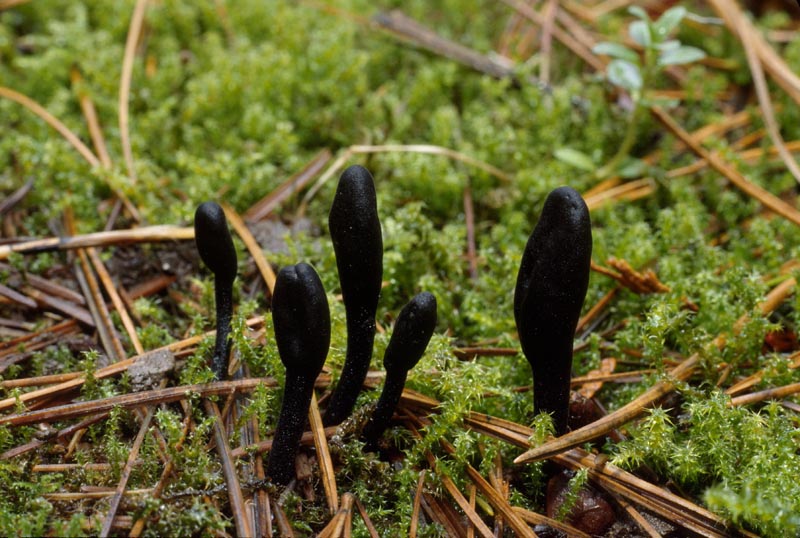
© Steve Trudell
Danny’s DNA Discoveries – Geoglossomycetes of the PNW
by Danny Miller
|
|
Danny’s DNA Discoveries – Geoglossomycetes of the PNW
|
|
Introduction
This class produces dark brown to black earth tongues that are usually spathulate and long stemmed (one genus has a round head). They are most easily confused with Microglossum, but those are a bit more brightly coloured (although one is purplish black) and have colourless spores. abundant common uncommon rare - colour codes match my Pictorial Key and are my opinions and probably reflect my bias of living in W WA. Rare species may be locally common in certain places at certain times. |
|
Geoglossomycetes
Trichoglossum 'hirsutum PNW01' - blackish, covered in tiny hairs (unlike Geoglossum). You may need a hand lens. Three PNW sequences differ from EU type area sequences. Trichoglossum cf velutipes NY - differentiated microscopically. We have no DNA from anywhere. Glutinoglossum cf glutinosum EU - is viscid and almost black. ENA and EU sequences differ so we need local sequences to see which species we have. Sabuloglossum monticola EU - not known from the PNW until it was sequenced from WA. These brownish black earth tongues only have a short stem, with the entire fruitbody being about 1cm tall. Sarcoleotia PNW01 - with a nearly spherical dark brown head and paler brown stem. One probable local sequence is 6% different in ITS from EU sequences of Sarcoleotia globosa EU, so our species probably needs a new name. EU sequences vary about 2% from each other, so there might be more than one species in the EU, but even if that is all one species ours is likely unique. Trichoglossum 'hirsutum PNW01' © Warren Cardimona, unsequenced Sarcoleotia sp. © Connor Dooley
Geoglossum 'fallax PNW01' - brown (most others are black or almost black). Geoglossum is neither hairy like Trichoglossum nor viscid like Glutinoglossum. G. fallax seems to be a complex of species in the EU. I have no NY type area sequences, but it seems plausible that our species might need a new name since its sequence doesn't match any of the EU concepts. Geoglossum PNW06 - also brown and resembling G. fallax (and closely related). This doesn't seem to match any EU species either. I don't know how to tell it apart from PNW01. Geoglossum 'sphagnophila PNW02' - black, found in sphagnum moss, although the others can be too. Geoglossum 'sphagnophila PNW03' - PNW03 is 4 bp different than an EU sequence that may represent this EU species, and 7 bp different than PNW02. Both may be the same species, and may actually be G. sphagnophila, since that's not a lot of difference. These species were not previously reported from the PNW before they were sequenced, and yet they seem to be the most common. Geoglossum 'glabrum PNW04' - blackish. Some consider it a synonym of G. sphagnophila, but it appears that it isn't. However, I don't know how to differentiate them. One OR sequence is 2% different than an ENA sequence and 2% different than the closest EU type area sequence match, so it's possible our species may need its own name. Geoglossum 'umbratile PNW05' - blackish, differentiated from G. glabrum microscopically. This seems to be a group of species in the EU, and one sequence that may be from OR does not match any of them and may need its own name. Some say Geoglossum nigritum EU is a synonym of G. umbratile. Geoglossum PNW06 © Matthew Koons, G. 'sphagnophilum PNW02' © Connor Dooley, G. 'sphagnophilum PNW03' © Jordan Gates (2 images) and Andrew Parker |